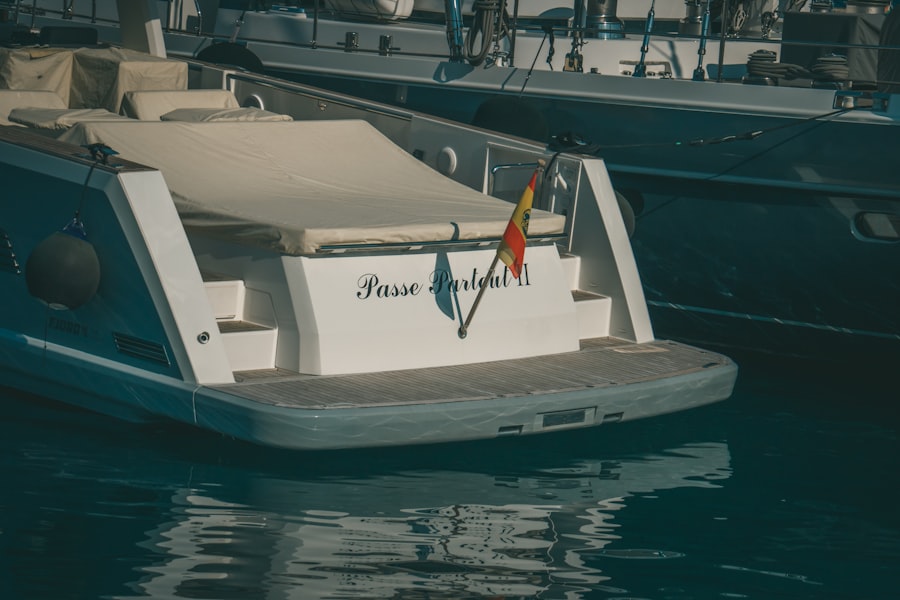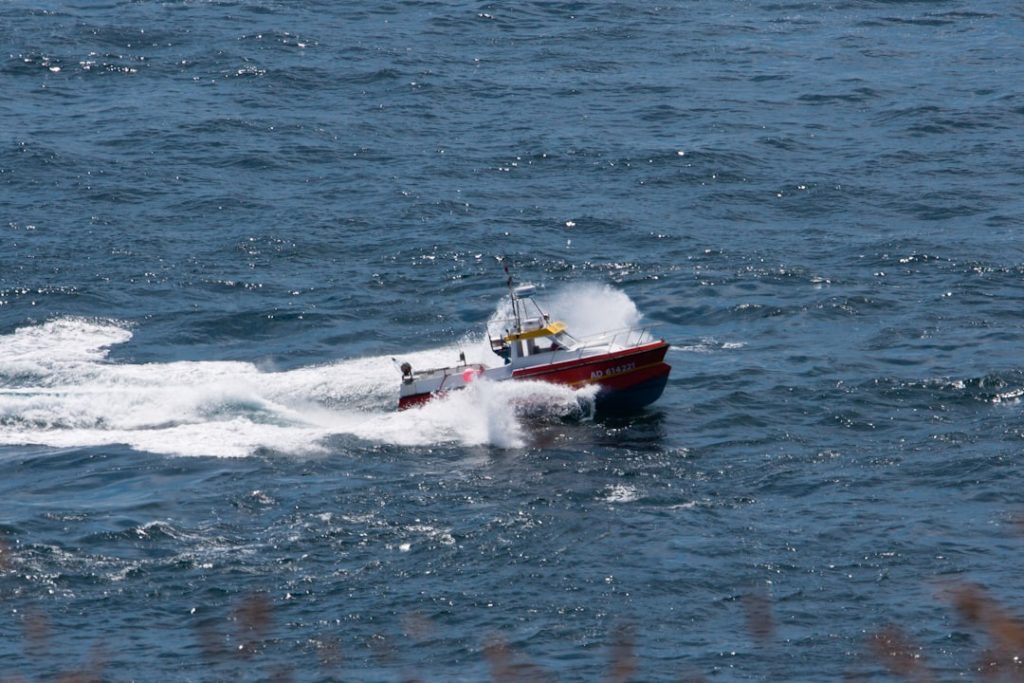The allure of boating often comes with a hefty price tag, particularly when it comes to purchasing new outboard motors. However, opting for a used outboard boat motor can provide significant financial relief while still delivering reliable performance on the water. One of the most compelling benefits of buying used is the cost savings.
New outboard motors can range from a few thousand to tens of thousands of dollars, depending on the brand and horsepower. In contrast, a well-maintained used motor can often be found at a fraction of the price, allowing boaters to allocate their budget toward other essential equipment or experiences, such as fishing gear or boating accessories. Beyond the financial aspect, purchasing a used outboard motor can also offer a sense of value and sustainability.
By choosing a pre-owned motor, boaters are participating in a circular economy that reduces waste and promotes the reuse of resources. This is particularly relevant in an era where environmental consciousness is paramount. Additionally, many used outboard motors come with a history of performance and reliability, which can be beneficial for buyers who are looking for specific models known for their durability.
Many seasoned boaters have developed a keen understanding of which brands and models stand the test of time, making it easier to find a used motor that meets their needs.
Key Takeaways
- Used outboard boat motors offer cost-effective and reliable performance for boating enthusiasts.
- Key factors to consider include motor condition, hours of use, and compatibility with your boat.
- Quality used motors can be found through reputable dealers, online marketplaces, and boat shows.
- Thorough inspection before purchase is crucial to avoid costly repairs and ensure motor longevity.
- Regular maintenance, proper installation, and correct storage significantly extend the life of used outboard motors.
Factors to Consider When Purchasing a Used Outboard Boat Motor
When embarking on the journey to purchase a used outboard motor, several critical factors must be taken into account to ensure a wise investment. First and foremost is the motor’s horsepower, which should align with the size and type of boat being used. A motor that is too powerful can lead to handling difficulties and increased fuel consumption, while one that is underpowered may struggle to perform adequately.
Understanding the boat’s specifications and intended use—whether for leisurely cruising, fishing, or water sports—will guide buyers in selecting the appropriate horsepower. Another essential consideration is the age and condition of the motor. While some older models may still perform admirably, they may lack modern features that enhance efficiency and ease of use.
Buyers should inquire about the motor’s maintenance history, including any repairs or replacements that have been made. A well-documented service history can provide insights into how well the motor has been cared for and whether it has experienced any significant issues in the past. Additionally, potential buyers should consider the availability of parts for older models, as some manufacturers may discontinue support for certain engines over time.
Where to Find Quality Used Outboard Boat Motors for Sale

Finding quality used outboard boat motors requires a strategic approach to ensure that buyers are presented with reliable options. One of the most common avenues is through online marketplaces and classified ads. Websites such as Craigslist, eBay, and specialized boating forums often feature listings from private sellers and dealers alike.
These platforms allow buyers to filter their search based on location, price range, and specific motor features, making it easier to find a suitable match. In addition to online resources, local boat dealerships can be invaluable when searching for used outboard motors. Many dealerships offer trade-in programs where customers can exchange their old motors for credit toward new purchases.
This often results in a selection of certified pre-owned motors that have undergone inspection and refurbishment by trained technicians. Furthermore, attending boat shows or marine expos can provide opportunities to connect with sellers directly and view multiple options in one location. Networking within local boating communities can also yield leads on motors that may not be publicly listed but are available for sale.
Inspecting a Used Outboard Boat Motor Before Purchase
| Inspection Aspect | What to Check | Acceptable Condition | Potential Issues |
|---|---|---|---|
| Visual Condition | Look for corrosion, cracks, dents, and paint condition | Minimal corrosion, no cracks, minor cosmetic wear | Heavy corrosion, visible cracks, damaged housing |
| Propeller | Inspect for bends, chips, and shaft straightness | Propeller blades intact, shaft straight and secure | Bent blades, chips, loose or bent shaft |
| Engine Compression | Measure cylinder compression with a gauge | Compression within manufacturer’s specifications | Low or uneven compression readings |
| Fuel System | Check fuel lines, primer bulb, and carburetor condition | Fuel lines flexible, no leaks, carburetor clean | Cracked lines, fuel leaks, clogged carburetor |
| Cooling System | Inspect water pump impeller and cooling passages | Impeller in good condition, no blockages | Worn impeller, clogged or corroded passages |
| Starting System | Test pull start or electric start functionality | Engine starts smoothly without excessive effort | Hard to start, no start, or unusual noises |
| Exhaust System | Check for blockages and excessive smoke | Clear exhaust, minimal smoke during operation | Blocked exhaust, heavy smoke or unusual odors |
| Oil and Lubrication | Check oil level, color, and presence of contaminants | Clean oil, proper level, no metal shavings | Dirty oil, low level, metal particles present |
| Electrical System | Inspect wiring, battery connections, and ignition | Wiring intact, good battery connections, ignition works | Frayed wires, corroded terminals, ignition failure |
| Overall Performance | Run the motor and listen for unusual sounds or vibrations | Smooth operation, consistent power output | Knocking, excessive vibration, power loss |
Before finalizing a purchase, conducting a thorough inspection of the used outboard motor is crucial to avoid potential pitfalls. A visual examination should be the first step; buyers should look for signs of wear and tear, such as rust, corrosion, or cracks in the casing. The condition of the propeller is also important; any dents or bends could indicate previous impacts that might affect performance.
Additionally, checking for leaks around seals and gaskets can reveal underlying issues that may not be immediately apparent. Beyond visual cues, it is advisable to conduct a mechanical inspection if possible. This may involve checking the engine’s compression using a gauge to ensure that it is within acceptable limits.
A compression test can reveal whether the engine has been well-maintained or if it may require significant repairs soon after purchase. Furthermore, asking the seller about recent maintenance work—such as oil changes, impeller replacements, or fuel system cleanings—can provide insight into how well the motor has been cared for over its lifespan. If feasible, arranging for a test run on the water can also help assess performance firsthand.
Maintenance Tips for Used Outboard Boat Motors
Proper maintenance is essential for prolonging the life of any outboard motor, especially those that are pre-owned. Regularly changing the oil and replacing filters is one of the most straightforward yet effective ways to keep an engine running smoothly. It is recommended to follow the manufacturer’s guidelines regarding oil type and change intervals, as using the wrong oil can lead to premature wear or engine failure.
Additionally, inspecting and replacing spark plugs as needed can ensure optimal ignition performance. Another critical aspect of maintenance involves winterization procedures for those who live in colder climates. Failing to properly winterize an outboard motor can lead to significant damage due to freezing temperatures.
This process typically includes draining any remaining fuel from the system, adding antifreeze to prevent freezing in water passages, and ensuring that all components are clean and lubricated before storage. Regularly checking the fuel system for contaminants and using fuel stabilizers can also help maintain engine performance over time.
Ensuring Proper Installation of a Used Outboard Boat Motor

The installation process of a used outboard motor is just as important as its selection and maintenance. Proper installation ensures not only optimal performance but also safety while operating the boat. Before beginning installation, it is crucial to consult both the motor’s manual and the boat’s specifications to ensure compatibility.
The mounting height of the motor should be carefully considered; an improperly mounted motor can lead to poor handling and reduced efficiency. During installation, attention must be paid to securing all bolts and connections according to manufacturer specifications. This includes ensuring that electrical connections are clean and free from corrosion, as poor connections can lead to electrical failures while on the water.
Additionally, checking that fuel lines are properly connected and free from leaks is vital for safe operation. After installation, conducting a thorough test run will help confirm that everything is functioning correctly before heading out on longer trips.
Upgrading and Customizing Used Outboard Boat Motors
For many boating enthusiasts, upgrading or customizing a used outboard motor can enhance performance and tailor it to specific needs or preferences. One common upgrade involves enhancing fuel efficiency through modifications such as installing high-performance carburetors or fuel injectors. These upgrades can optimize fuel delivery and improve overall engine responsiveness, making for a more enjoyable boating experience.
Another area ripe for customization is propeller selection. Different propellers can significantly affect speed, acceleration, and handling characteristics based on their design and pitch. By experimenting with various propeller types, boaters can find one that best suits their style of boating—whether it’s high-speed cruising or leisurely fishing trips.
Additionally, adding accessories such as trim tabs or hydrofoils can improve stability and control at various speeds.
The Importance of Properly Storing a Used Outboard Boat Motor
Proper storage practices are essential for maintaining the longevity of a used outboard motor when it is not in use. For those who live in regions with harsh winters or extreme weather conditions, indoor storage is highly recommended to protect against environmental damage such as rust or corrosion. If indoor storage isn’t feasible, using high-quality covers designed specifically for outboard motors can provide adequate protection against moisture and UV exposure.
Before storing an outboard motor for an extended period, it’s crucial to perform thorough maintenance tasks such as cleaning the exterior, draining fuel systems, and adding protective lubricants to internal components. This proactive approach helps prevent issues like fuel degradation or internal corrosion during periods of inactivity. Additionally, regularly checking on stored motors throughout the off-season ensures that any potential problems are addressed before they escalate into costly repairs when it’s time to hit the water again.


